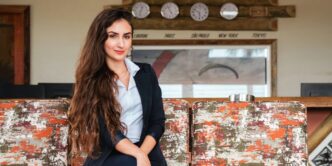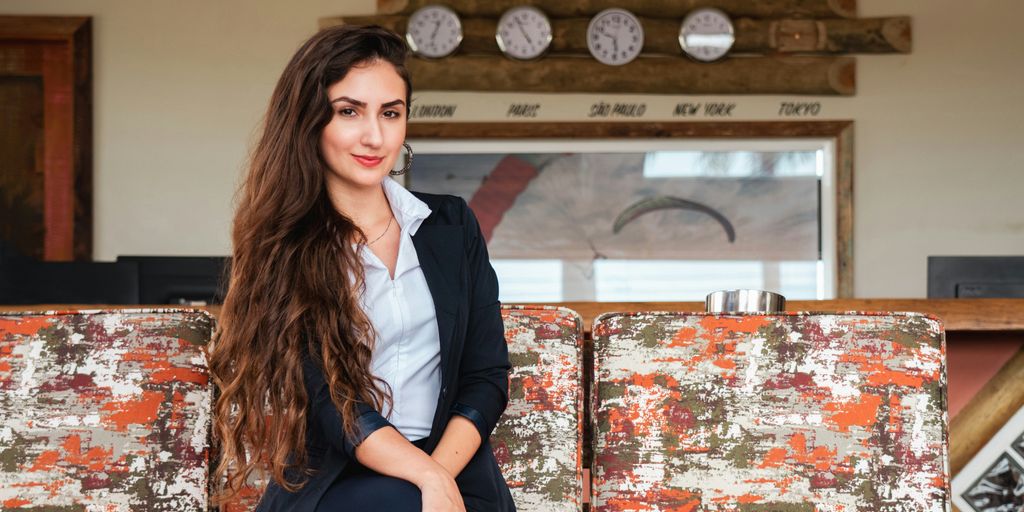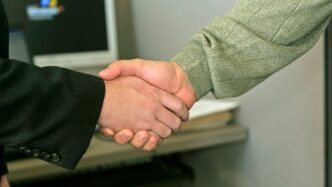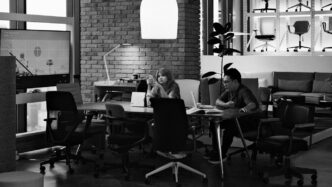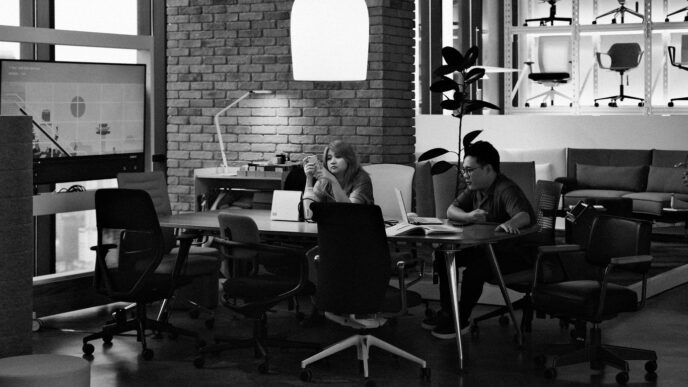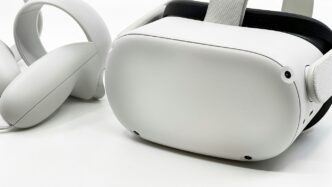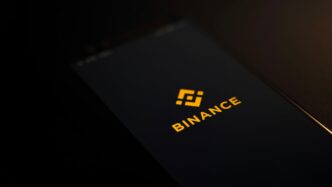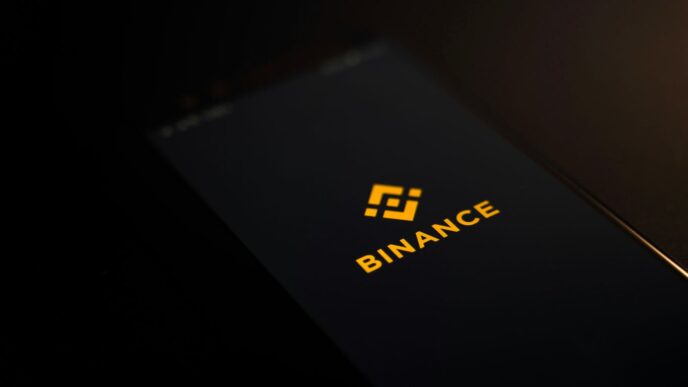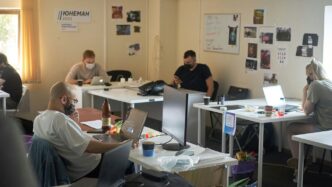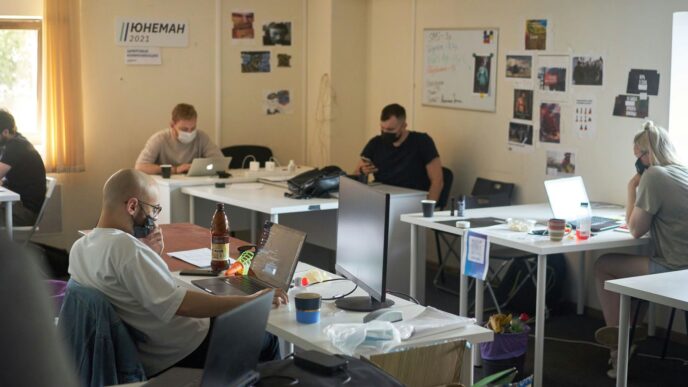Figuring out what to wear for a job interview can be tricky, especially for women. You want to look good, but also make sure your clothes fit the company and the job. It’s not just about looking nice; it’s about showing you’re serious and ready for the role. This guide will help you pick the right clothes so you can feel good and focus on nailing that interview. We’ll cover everything from what to wear to an interview for a female candidate in different fields to how to accessorize and what to avoid.
Key Takeaways
- Always make sure your clothes are clean and don’t have wrinkles. This shows you pay attention to details and care about how you present yourself.
- Wear clothes that fit you well and feel good. If your outfit is too tight or uncomfortable, you’ll be distracted during the interview, and you want to focus on talking about your skills.
- Think about your shoes just as much as your clothes. You might walk around during the interview, so pick shoes that are comfy but still look professional, like flats or low heels.
- You can still show off your personal style. While you want to look professional, your clothes can also hint at who you are. This is part of your personal brand and can help you stand out.
- If you’re not sure what to wear, it’s usually better to dress a little more formally than too casually. Being a bit overdressed shows you’re prepared and take the opportunity seriously.
Key Considerations For Your Interview Outfit
Choosing the right outfit for an interview can feel like a high-stakes game. You want to make a good impression, but also feel comfortable and confident. It’s a balancing act! Here’s what to keep in mind:
Prioritize Cleanliness And Wrinkle-Free Attire
First impressions matter, and a wrinkled or stained outfit screams ‘unprepared’. Even the nicest clothes lose their appeal if they’re not clean and pressed. Take the time to iron your clothes the night before, and double-check for any spots or imperfections. It shows you pay attention to detail, which is a quality employers value. No one wants to be distracted by a stain when you’re trying to explain your qualifications. Think of it as presenting your best self, visually.
Ensure A Comfortable And Well-Fitting Ensemble
Comfort is key! If you’re constantly fidgeting with your clothes because they’re too tight, too short, or just plain uncomfortable, it’ll distract you and the interviewer. You want to focus on answering questions and showcasing your skills, not adjusting your skirt or pulling down your sleeves. Make sure your interview answers are the focus, not your discomfort. Choose clothes that fit well and allow you to move freely. Trust me, you’ll feel more confident and relaxed if you’re not battling your outfit all day.
Thoughtful Footwear Choices
Shoes are often an afterthought, but they can make or break an outfit. Consider the type of interview and the company culture when selecting your footwear. Are you going to be doing a lot of walking? Will you be on your feet for long periods? Comfort is important, but so is professionalism. Avoid overly casual shoes like flip-flops or sneakers (unless you’re interviewing at a sneaker company, maybe!). Opt for closed-toe shoes that are clean and in good condition. Ballet flats, loafers, or a classic pump are generally safe bets. Just make sure you can walk comfortably in them – no one wants to see you hobbling around the office. Here’s a quick guide:
| Shoe Type | Appropriateness Level | Comfort Level | Notes |
|---|---|---|---|
| Ballet Flats | High | High | Versatile, good for walking |
| Loafers | High | Medium | Professional, can be dressed up or down |
| Classic Pumps | High | Medium | Timeless, choose a comfortable heel height |
| Ankle Boots | Medium | Medium | Okay for winter, ensure they’re polished |
| Strappy Sandals | Low | High | Avoid for interviews |
Dressing For Different Industries

It’s important to tailor your interview outfit to the specific industry you’re targeting. What works in a creative field might be a total miss in a more conservative one. Think of your outfit as a way to show you understand the company culture and can fit right in.
Conservative Fields: Polished Professionalism
For industries like finance, law, or government, you want to project competence and trustworthiness. A classic, tailored look is your best bet. Think neutral colors like navy, gray, or black. A suit is always a safe choice, or a skirt and blazer combo. Make sure everything fits well and is free of wrinkles. You can’t go wrong with a simple blouse or button-down shirt. These fields value tradition and professionalism, so your attire should reflect that. A tailored suit is a great option.
Creative Industries: Expressing Personal Style
If you’re interviewing in a creative field like marketing, design, or advertising, you have more leeway to express your personality through your clothing. While you still want to look professional, you can incorporate bolder colors, interesting patterns, and unique silhouettes. Think about wide-leg pants, a stylish blouse, or a blazer with a pop of color. The goal is to show that you’re creative and have an eye for style, but without looking sloppy or unprofessional. It’s a balancing act, but it’s a chance to let your personality shine. Don’t be afraid to experiment a little, but always keep it polished.
Business Casual Environments: Smart And Adaptable
Many companies today have a business casual dress code, which can be tricky to navigate for an interview. You want to look put-together and professional, but not overdressed. A good rule of thumb is to aim for the higher end of business casual. Think tailored pants or a skirt with a blouse or sweater. A blazer can add a touch of polish. Avoid jeans, t-shirts, and sneakers. The key is to look like you made an effort, but without looking like you’re trying too hard. If you’re unsure, it’s always better to err on the side of being slightly more dressed up than slightly more dressed down. A retail position interview requires a smart and adaptable outfit.
Seasonal Interview Attire For Women
Winter Interview Outfits: Layering With Style
Okay, so winter interviews can be tricky. You want to stay warm, but you also need to look professional. Layering is your best friend here. Think about a well-fitted sweater over a crisp button-down shirt. Pair that with some tailored pants or a knee-length skirt and knee-high boots. A blazer is always a good idea, too. Just make sure everything fits well and isn’t too bulky. You don’t want to look like you’re wearing a snowsuit! Accessorize with a simple scarf and gloves if needed, but keep it minimal. Don’t forget to consider the weather; arrive with neat winter interview outfits and avoid bringing in snow or water on your shoes.
Summer Interview Outfits: Breathable And Professional
Summer interviews are all about staying cool and comfortable without sacrificing professionalism. Lightweight fabrics like linen and cotton are your go-to. A knee-length skirt or dress with short sleeves is a great option. You could also wear tailored pants with a blouse. Avoid anything too revealing or casual, like tank tops or shorts. Sandals are generally a no-go, so stick to closed-toe shoes. If you’re wearing a blazer, make sure it’s a breathable fabric. And don’t forget to stay hydrated! You want to look and feel fresh, even if it’s hot outside. Consider a light-colored suit or a summer interview dress to reflect the heat and maintain a professional appearance.
What Not To Wear To An Interview
It’s just as important to know what not to wear as it is to know what to wear. You want the interviewer to focus on your qualifications, not be distracted by your clothing choices. Let’s break down some common pitfalls to avoid.
Avoid Underdressing At All Costs
One of the biggest mistakes you can make is showing up in something too casual. Underdressing can signal a lack of respect for the opportunity. Think about it: you’re trying to make a good impression, and your clothes are part of that. This means leaving the wrinkled t-shirts, ripped jeans, and anything you’d wear to the beach at home. Even in more relaxed industries, there’s a baseline level of professionalism you need to meet. For example, graphic tees featuring bands or cartoon characters, shorts (even longer ones), very short dresses or skirts, and tops with spaghetti straps are generally not a good idea. It’s better to err on the side of being slightly overdressed than to appear as though you didn’t take the interview seriously. If you’re unsure, research the company culture or ask the recruiter for guidance.
Steer Clear Of Overly Casual Items
Building on the point above, let’s talk specifics. While some workplaces are becoming more relaxed, certain items are almost always off-limits for interviews. This includes things like flip-flops, athletic wear (unless you’re interviewing for a fitness-related role, of course!), and anything with excessive rips or tears. Even if the company has a casual dress code, it’s best to elevate your look for the interview. Think of it as showing you understand the difference between everyday wear and making a professional impression. A good rule of thumb is, if you’d wear it to lounge around the house, it probably shouldn’t be your interview outfit. Instead, consider professional settings that value dynamism.
Minimize Distracting Elements
Finally, think about anything that might pull the interviewer’s attention away from what you’re saying. This could be overly flashy jewelry, noisy accessories, or anything that requires constant adjustment. You want the focus to be on your skills and experience, not on your outfit. Also, make sure your clothes fit well and are comfortable. If you’re constantly fidgeting with a skirt that’s too short or pants that are too tight, it will be distracting for both you and the interviewer. Choose something that allows you to relax and focus on answering questions confidently. Remember, accessories should complement, not overshadow, your overall look. Avoid big, bold earrings and necklaces, and opt for minimalistic, classic styles. If you love stacking rings and wristbands, tone it down to a maximum of two pieces. And if you wear glasses, make sure they’re clean.
Accessorizing Your Interview Look
Accessories can really make or break an outfit, and that’s especially true for an interview. You want to look polished and professional, but also like you. It’s a balancing act, for sure.
Strategic Accessory Choices
Think of accessories as the supporting cast of your outfit. They should complement, not distract. A simple scarf, a nice watch, or a tasteful bag can add personality without being overwhelming. Consider the industry you’re interviewing in. A pop of color might be great for a creative field, but more subdued tones are better for conservative environments. Think about carrying a stylish bag that shows who you are, but make sure it’s not too distracting.
Minimalist Jewelry For A Polished Finish
When it comes to jewelry, less is definitely more. Avoid anything too flashy or noisy. Dangling earrings or a chunky necklace can be distracting. Instead, opt for delicate pieces like a simple chain, small stud earrings, or a classic bracelet. If you love rings, stick to one or two understated pieces. The goal is to add a touch of elegance without drawing too much attention.
Eyewear Etiquette
If you wear glasses, make sure they’re clean! It sounds obvious, but smudges and fingerprints can be a real distraction. Choose frames that suit your face and reflect your personal style. If you’re considering contacts just for the interview, make sure you’re comfortable wearing them. You don’t want to spend the whole time fidgeting with your eyes. And remember, your glasses are part of your personal branding, so choose wisely!
Maintaining Your Personal Style
Showcasing Your Personality Through Style
It’s easy to fall into the trap of thinking you need to completely change your style for an interview, but that’s not the case! Your personal style is part of what makes you unique, and it can be an asset in an interview setting. Think about how you can incorporate elements of your everyday wardrobe into a professional look. Maybe it’s a favorite color, a particular type of jewelry, or a unique pattern. The key is to do it in a way that’s still appropriate for the industry and company culture.
Personal Branding And Your Interview Outfit
Your interview outfit is an extension of your personal brand. It communicates something about you before you even open your mouth. Consider what you want to convey. Are you creative and innovative? Reliable and detail-oriented? Your clothing choices can help reinforce that message. It’s about finding the balance between expressing yourself and fitting in with the company’s image. Think of it as a subtle way to show you understand their values and can contribute to their team. Don’t be afraid to let your personal branding shine through!
When In Doubt, Overdress
It’s always better to be slightly overdressed than underdressed for an interview. It shows you take the opportunity seriously and that you’re willing to put in the effort. If you’re unsure about the company’s dress code, err on the side of caution and choose a more formal outfit. You can always remove a blazer or cardigan if you feel overdressed once you arrive. Plus, dressing up can boost your confidence, which is always a plus in an interview setting. Remember those interview answers you prepared? You’ll deliver them with even more conviction when you feel good about how you look. Here’s a quick guide:
- Formal: Suit, dress pants and blouse, closed-toe shoes
- Business Casual: Dress pants or skirt, blouse or sweater, blazer optional
- Casual: (Use with caution!) Clean, well-fitting pants or skirt, collared shirt or nice top
Conclusion
So, there you have it. Picking out what to wear for an interview might seem like a big deal, but it really just comes down to a few simple things. Make sure your clothes are clean and fit right. Think about the kind of place you’re interviewing at, and dress in a way that makes sense for their vibe. And don’t forget, a little bit of personal style is fine, as long as it’s not too much. When you feel good in what you’re wearing, it helps you feel more sure of yourself, and that’s what really matters. Good luck out there!
Frequently Asked Questions
What kind of clothes should I wear to a job interview?
For most job interviews, it’s best to dress in a way that shows you’re serious and professional. This usually means wearing business casual clothes, like nice pants or a skirt with a blouse or a simple dress. If the job is in a very formal field, like law or finance, a suit might be a better choice. If it’s a creative job, you can show a bit more of your personal style.
Is it better to dress up or dress down for an interview?
It’s always a good idea to dress a little nicer than you think you need to. Even if the company has a relaxed dress code, showing up well-dressed proves you care about the job and are prepared. It makes a good first impression.
What are the most important things to remember about my interview outfit?
You should pick clothes that are clean, don’t have wrinkles, and fit you well. Make sure you can move comfortably in them. Your shoes should also be comfortable, especially if you might be walking around during the interview. Simple and classic accessories are usually best.
What should I definitely NOT wear to a job interview?
Try to stay away from clothes that are too casual, like ripped jeans, old t-shirts, or anything that looks messy. Also, avoid anything that’s too flashy, like very bright colors or lots of distracting jewelry. You want the focus to be on you and your skills, not your clothes.
How do I choose an outfit based on the type of job or company?
For interviews in fields like law or banking, a tailored suit in a dark color like navy or gray, or a nice dress with a blazer, is a good choice. For creative jobs, you can wear stylish pants or a skirt with a unique top, maybe with a pop of color, to show your personality.
Do I need to dress up for a video interview?
Yes, even for a video interview, it’s important to dress professionally, at least from the waist up. Wear a nice top, blouse, or blazer. Make sure your hair is neat and your background is tidy. It helps you feel more confident and shows you’re taking the interview seriously.

